Shani Jayanti, a sacred day of profound astrological and spiritual significance, marks the birth anniversary of Bhagwan Shani Dev, the divine ruler of karma and justice. This auspicious occasion is dedicated to honoring the disciplined, impartial, and transformative power of Shani Dev, whose influence governs the fruits of one’s actions and imparts life lessons through trials and tribulations. As the celestial judge and a manifestation of Dharma, Shani Dev is revered for bestowing justice with unwavering fairness, guiding devotees toward righteousness and self-discipline.
In 2025, Shani Jayanti will be observed on Tuesday, May 27th . This sacred day is a time for prayers, austerities, and deep contemplation on the principles of karma and spiritual discipline. Devotees worship Shani Dev by lighting lamps, reciting Shani mantras such as the Shani Stotra, and seeking his blessings for relief from hardships and obstacles. Fasting and acts of charity, especially serving the underprivileged, are believed to mitigate adverse planetary influences and bring stability in life.
Significance & Importance of Shani Jayanti
Astronomically, Saturn, the second-largest planet in the Solar System, holds the distinction of being the sixth planet from the Sun. Its presence in astronomical studies has been well-documented in ancient Hindu texts, including Aryabhata's renowned treatise Aryabhatiya (5th century CE), which discusses the planet’s motion, revolution, and other parameters. Similarly, Varahamihira’s Surya Siddhanta has undergone several revisions over the centuries, refining the calculations related to Saturn's revolution and axial motion.
For instance, an earlier version of Surya Siddhanta stated that Saturn completes 146,564 revolutions on its axis every 4,320,000 Earth years. However, a later revision adjusted this figure to 146,568 revolutions, incorporating modifications in apogee, axis, and orbital parameters. Modern astronomical calculations estimate that Saturn’s sidereal revolution (one complete orbit around the Sun) takes approximately 10,759 days, 5 hours, 16 minutes, and 32.2 seconds.
Astrological Significance in Vedic Astrology
In Vedic astrology, Saturn, or Shani Dev, is regarded as the divine ruler of karma, justice, discipline, and perseverance. Born to Surya Dev (the Sun God) and Devi Chhaya (Goddess of Shadow), Shani is often misunderstood and feared due to his association with challenges, obstacles, and karmic retribution. However, his influence serves to discipline the soul, guiding individuals toward spiritual evolution and righteous action.
Role of Shani in the Birth Chart
In a horoscope, Shani is the significator (Kāraka) of the sixth, eighth, and tenth houses, governing themes of struggle, transformation, and career. His placement determines whether his influence will be beneficial or challenging:
- Exaltation: Shani is exalted in Libra (0°–20° degrees), where his energies manifest with balance and justice.
- Debilitation: Shani is debilitated in Aries (0°–20° degrees), where his restrictive nature conflicts with Aries' impulsiveness.
Additionally, planetary relationships in astrology influence Shani’s effects:
- Friends: Mercury and Venus.
- Enemies: Sun, Moon, and Mars.
- Neutral:
Shani’s transit (Gochar) through different houses plays a crucial role in determining the karmic results of an individual, with varying effects based on planetary aspects and placements.
Shani Saade Sati: The 7½-Year Phase of Transformation
One of the most discussed aspects of Saturn’s influence in astrology is Shani Saade Sati, a 7½-year transit when Saturn moves across the twelfth, first, and second house from an individual’s natal Moon sign. Traditionally, this period is feared due to its association with difficulties, yet it serves as a phase of profound spiritual, mental, and emotional transformation.
Contrary to widespread misconceptions, Shani Saade Sati is not inherently negative. It acts as a period of self-reflection, karmic cleansing, and disciplined effort. Many historical figures and celebrities have achieved remarkable success during this period, proving that the challenges of Saade Sati can also serve as stepping stones to greatness. The outcome depends on how the individual embraces Saturn’s lessons of patience, discipline, and righteous action.
Whether in astronomy or astrology, Saturn (Shani) is a celestial force of immense significance. In Vedic astrology, his influence is neither inherently good nor bad—it is determined by the individual's actions, mindset, and karmic alignment. When embraced with sincerity, Shani’s lessons bring wisdom, resilience, and success, reinforcing the eternal law of karma: As you sow, so shall you reap.
The observance of Shani Jayanti serves as a powerful reminder of the inevitability of karmic justice, the importance of patience and perseverance, and the grace that comes through sincere devotion and righteous conduct. By venerating Shani Dev with humility and faith, devotees aspire to attain inner fortitude, wisdom, and alignment with divine law.
Stories of Shani Jayanti Festival
According to the Skanda Purana, the most revered account of Shani Dev’s birth, he is the son of Surya Dev and Devi Chhaya, the Goddess of Shadows. Yet, his origins are marked by an extraordinary turn of fate.
Surya Dev’s wife, Sandhya, was a devoted woman but found herself unable to withstand the brilliance of her husband's celestial radiance. Over time, the relentless heat became unbearable, and longing for peace, she resolved to perform penance. However, she was bound by her duties as a wife and mother. In an act of divine ingenuity, she created a mystical shadow self, an exact replica of herself, naming her Chhaya (Suvarna). Entrusting Chhaya with the care of her children—Vaivasvata Manu, Yama Raj (Bhagwan of Death), and Yamuna (the sacred river goddess)—Sandhya quietly departed, retreating into the forests to meditate in solitude.
Surya Dev, unaware of the deception, continued his life with Chhaya, believing her to be Sandhya. Their union bore three children:
- Manu (ruler of mankind)
- Shani (the Bhagwan of Karma and Justice)
- Putri Bhadra (Tapti, the river goddess)
When Sandhya’s parents learned of her actions, they were deeply disturbed. They rebuked her and urged her to return to her husband. But overcome with shame, Sandhya fled further into the wilderness, taking the form of a mare to escape the consequences of her choices.
Meanwhile, Surya Dev remained oblivious, living under the illusion that Chhaya was his true wife.
A Child Born of Devotion and Austerity
Though Chhaya was bound to Surya Dev as his wife, her heart belonged to Bhagwan Shiva, whom she worshipped with unwavering devotion. Throughout her pregnancy, she engaged in intense penance, immersing herself in deep meditation and ascetic rituals. It is believed that this austerity infused her unborn child with immense power, making him a divine manifestation of discipline, justice, and karmic retribution.
At last, Shani Dev was born, his complexion dark as the night sky, his presence imbued with a mysterious and formidable aura.
The Wrath of Shani: A Child’s Gaze That Diminished the Sun
Upon seeing his newborn son’s dark complexion, Surya Dev was filled with doubt and suspicion. Unable to reconcile his own brilliant radiance with the child’s dusky hue, he accused Chhaya of infidelity and insulted her with cruel words.
Shani, still an infant but divinely aware, opened his eyes and cast his gaze upon his father. In that instant, Surya Dev’s body turned black, his brilliance faded, and the celestial horses of his golden chariot refused to move.
The entire cosmos trembled. The sun, the eternal source of life, had lost its radiance.
Overcome with fear, Surya Dev sought refuge in Bhagwan Shiva, pleading for guidance. The great Bhagwan, in his infinite wisdom, revealed the truth—Shani was indeed his son, and his power was a result of Chhaya’s unwavering penance and devotion.
Realizing his grave mistake, Surya Dev repented, seeking his son’s forgiveness. With Shiva’s blessing, his brilliance was restored, and Shani Dev, now aware of his divine purpose, pledged to uphold dharma and dispense justice with absolute impartiality.
Shani Dev’s Role as the Bhagwan of Karma
As he grew, Shani Dev embraced his divine responsibility as the arbiter of karma. His role was not to punish but to teach—ensuring that every being reaped the fruits of their actions, be they good or bad. He neither favored nor discriminated, standing as the ultimate force of balance in the universe.
Shani Dev later entered into matrimony twice, marrying Manda and Neelima, with whom he had two sons, Maandhi and Kulingan.
However, his duty to justice always remained his foremost priority, and his impartial nature became both feared and revered by gods and mortals alike.
The Crow: The Loyal Messenger of Shani Dev
One of the most enduring symbols of Shani Dev’s presence is the crow, his divine vahana (vehicle).
Legend tells of a time when a humble crow displayed unwavering devotion to Shani Dev. Impressed by its loyalty, the great Bhagwan blessed the bird, granting it the honor of being his eternal companion. In gratitude, the crow swore to serve Shani Dev, becoming a messenger of justice and an emblem of karmic wisdom.
Even today, crows are regarded as sacred in Shani Dev’s worship, and feeding them is believed to reduce the adverse effects of Shani’s influence in one’s life.
The Eternal Truth of Shani Dev
The story of Shani Dev is not one of fear, but of wisdom. He is often misunderstood, seen as a bringer of misfortune, but in truth, he is the force that upholds righteousness, the teacher who guides souls toward self-discipline, patience, and spiritual evolution.
To this day, devotees pray to Shani Dev, seeking his blessings to overcome difficulties, embrace justice, and walk the path of dharma. His presence in astrology and mythology reminds us that no action goes unnoticed, and every deed—good or bad—finds its rightful reward.
Thus, Shani Dev stands as the ultimate witness of karma, an unwavering guardian of divine balance, ensuring that justice prevails in the cosmic order.
The Iconography of Shanidev: A Symbol of Cosmic Law
Every aspect of Shanidev’s divine form holds profound symbolic meaning. He is depicted draped in black or blue robes , signifying the deep, hidden truths of existence and the karmic forces that shape destinies. His complexion is dark like the infinite cosmos, representing the impartial and unwavering justice he delivers without bias or personal inclination.
Shani Dev rides upon his vahana (vehicle), the crow , a bird known for its keen intelligence and keen observation, much like Shani himself, who watches over every deed, word, and thought of all beings. In some depictions, he is seen in a chariot drawn by eight mighty horses , signifying the control he wields over the eight directions and the passage of time. He carries a sword , a danda (scepter) , and a Trishul (trident) —weapons not meant for destruction, but for enforcing discipline, guiding souls toward righteousness, and ensuring that karma is repaid in full measure.
Shani Jayanti 2025 Festival Date, Time, Muhurat & Tithi
Shani Jayanti will be observed on Tuesday, May 27th, 2025.
Amavasya Tithi (New Moon Day) in the Vaishakh month as per the North Indian Purnimant calendar and under the Jyeshtha month as per the South India and Amavasyant calendars.
Key Timings for Shani Jayanti 2025:
- Amavasya Tithi Begins: 12:11 PM on May 26th, 2025 (IST)
- Amavasya Tithi Ends: 08:31 AM on May 27th, 2025 (IST)
Since Shani Jayanti falls on May 27th, 2025, it aligns with the Amavasya Tithi, making this an auspicious occasion to worship Bhagwan Shani and seek relief from karmic hardships.
Please note that specific Puja Muhurat timings may vary based on location and local customs. Devotees are advised to consult local Panchang or temple authorities for precise timings and rituals.
The True Blessing of Shani Dev: Strength Through Adversity
Though many fear Shani Dev’s influence, the wise understand that his trials are actually blessings in disguise. Just as a blacksmith tempers iron in fire to make it strong, Shani’s tests refine the soul, molding individuals into their strongest, most capable selves. Those who embrace hard work, discipline, and righteousness under Shani’s gaze eventually rise from adversity stronger than ever before. Many who have faced great struggles during their Saadhe Saati have later found themselves achieving unparalleled success, wisdom, and spiritual enlightenment.
Thus, Shani Jayanti is not merely a day of worship—it is an opportunity for transformation. It is a time to bow before the Bhagwan of Karma, not in fear, but in gratitude, seeking his guidance, patience, and perseverance. Devotees observe fasts, recite Shani mantras, light mustard oil lamps, and offer prayers on Saturdays and Shani Jayanti to secure his divine grace, ensuring that their hardships lead to growth, wisdom, and ultimately, great fortune.
For those who walk the path of truth and embrace Shani Dev’s lessons with an open heart, the doors to unimaginable success, spiritual awakening, and karmic liberation are bound to open. Shanidev does not punish—he prepares. He does not destroy—he refines. And when his lessons are learned, he bestows rewards beyond measure.
Why Do People Fear Shani Dev?
There exists a widespread perception that Shani Dev exerts an aggressive and wrathful influence on human life. He is often associated with difficulties, obstacles, and suffering, leading many to fear his presence in their horoscope. However, this fear arises primarily from a misunderstanding of his divine role.
The Vedas affirm that celestial deities, empowered to maintain cosmic balance, have the authority to discipline and even destroy, but their actions are always rooted in divine justice rather than malevolence. Shani Dev is no exception—his trials and tribulations are not punishments born out of cruelty, but rather necessary lessons intended to refine and elevate the soul.
It is true that an inauspicious placement of Shani in one's horoscope can result in delays, struggles, and disappointments. However, these hardships are merely the consequences of one's own past karma. Shani Dev is the cosmic dispenser of justice, ensuring that each individual receives precisely what they deserve based on their deeds. He governs Saturn, the slowest-moving planet, which takes approximately thirty years to complete a revolution around the Sun. This slow movement is symbolic of the patience, perseverance, and deep introspection required to endure and overcome the trials that he imposes. When Shani casts his gaze upon someone, their progress in life may seem to slow down, but this is not an arbitrary affliction, it is a process of purification and transformation.
The scriptures describe Shani as the elder son of Surya Dev (the Sun God), born to Chhaya Devi, the shadow form of Surya’s first wife, Saranyu. His younger brother, Yama, is the god of death. Together, they oversee the administration of karma: Yama dispenses justice after death, while Shani delivers the consequences of one's actions during their lifetime. Unlike other deities who may bestow blessings easily, Shani Dev ensures that individuals face the results of their past deeds, teaching them responsibility and discipline. He is the great taskmaster, the strictest teacher, and the enforcer of dharma, imparting wisdom through hardship.
Shani Dev’s lessons are often difficult, yet they serve a higher purpose. He places obstacles in the path of those who have strayed, forcing them to cultivate patience, humility, and resilience. He prevents arrogance, restrains greed, and curbs excessive ambition, ensuring that individuals remain grounded. For those who learn and embrace his teachings, he rewards abundantly. Under his watch, the mighty may fall, and the humble may rise, for his justice is impartial and absolute. Many who have undergone the grueling trials of Shani’s influence have emerged wiser, stronger, and more successful, their lives transformed through perseverance and righteous conduct.
Observing Shani Jayanti is believed to appease Shani Dev and mitigate his malefic effects. On this sacred day, devotees engage in rituals, prayers, and acts of charity to seek his blessings. By sincerely honoring him, one can transform difficulties into opportunities for spiritual growth, discipline, and prosperity. Ultimately, Shani Dev is not to be feared but revered, for his guidance leads to true self-improvement and liberation from the shackles of karmic bondage.
How to Celebrate Shani Jayanti
Shani Jayanti is a sacred occasion dedicated to honoring the birth of Shani Dev, the Bhagwan of Karma and Justice. Devotees observe this day with deep reverence, seeking to mitigate the adverse effects of Shani Dosha, receive divine protection, and cultivate discipline in life. The celebration involves fasting, prayers, charitable acts, and self-reflection to align oneself with the teachings of Shani Dev.
The day begins with a purifying bath, ideally in a sacred river or at home with Ganga Jal (holy water). Devotees wear dark-colored clothes, typically black or blue, as these colors symbolize the cosmic energy of Shani Dev. They take a Sankalp (vow) to worship him with complete dedication and sincerity, acknowledging his role as the dispenser of justice and the guardian of dharma. Many devotees observe a strict fast, either refraining from food and water (Nirjala Vrat) or consuming only fruits and simple foods. The fast continues until sunset, after which it is broken with prayers and offerings.
Shani Puja is performed at home or in temples, where devotees make offerings to Shani Dev. One of the most important rituals is the Oil Abhishek, in which til (sesame) oil or mustard oil is poured over the idol or Shani Yantra. Other offerings include black sesame seeds, black gram (urad dal), and iron objects, all of which are believed to reduce the malefic effects of Saturn. Devotees also light mustard oil lamps and offer blue or black flowers as a mark of devotion. In some traditions, Neelanjana (a form of kohl or kajal) is applied to Shani’s idol to honor his divine presence.
Reciting Shani mantras and hymns is an integral part of the celebration. The chanting of the Shani Beej Mantra—“Om Praam Preem Praum Sah Shanaischaraya Namah”—as well as the Shani Maha Mantra and Shani Chalisa, is believed to bring peace and protection. Many devotees also recite the Shani Stotra by King Dasharatha to seek relief from hardships. These sacred recitations help to invoke the grace of Shani Dev and align one's life with righteousness.
Charity and selfless service play a vital role in pleasing Shani Dev. On this day, devotees donate black clothes, black sesame seeds, mustard oil, iron, and footwear to the poor and needy. Feeding crows, black dogs, and the physically challenged is considered highly auspicious, as Shani Dev is known to bless those who help the underprivileged. Some devotees prepare and distribute khichdi (a dish made of rice and lentils) to Brahmins and the less fortunate, believing that such acts of kindness reduce Saturn’s negative influence.
Visiting Shani temples is another significant aspect of the celebration. Many devotees undertake pilgrimages to renowned temples like Shani Shingnapur in Maharashtra, Kokilavan Dham in Uttar Pradesh, and Thirunallar Shani Temple in Tamil Nadu. At these temples, the sacred ritual of Tailabhishekam is performed, where devotees pour oil over the idol of Shani Dev or a Shivling, praying for relief from suffering and the strengthening of inner resolve.
Observing silence and self-reflection is also encouraged on Shani Jayanti. Since Shani Dev represents discipline, patience, and deep introspection, devotees practice Maun Vrat (silence) for a few hours to cultivate inner strength. Engaging in selfless service, performing righteous deeds, and adhering to dharma are all ways to align with Shani Dev’s teachings.
By celebrating Shani Jayanti with devotion, sincerity, and adherence to righteous conduct, devotees seek the blessings of Shani Dev, overcoming obstacles and inviting prosperity, wisdom, and spiritual growth into their lives.
Shani Jayanti Festival Puja Vidhi (Puja Procedure)
Shani Jayanti marks the birth anniversary of Bhagwan Shani, the cosmic judge of karma and justice. Observing this sacred day with devotion helps alleviate Shani's malefic influence and brings discipline, stability, and success.
Below is the step-by-step Puja Vidhi (worship procedure) to seek his blessings:
- Purification – Begin the day with an early morning bath, wear clean blue or black clothes, and cleanse the puja area.
- Sankalp (Vow) – Take a resolve (sankalp) with devotion, praying to Bhagwan Shani for protection, wisdom, and relief from hardships.
- Kalash Sthapana – Place a kalash (sacred water vessel) on a clean cloth, symbolizing divine energy.
- Bhagwan Shani’s Idol or Picture – Install an idol or picture of Bhagwan Shani, preferably made of iron, black stone, or Shami wood.
- Invocation (Dhyana & Prarthana) – Meditate upon Bhagwan Shani and recite his prayers, invoking his divine presence.
- Abhishek (Holy Bath) – Bathe the idol with panchamrit (milk, curd, ghee, honey, and sugar) or sesame oil and water.
- Offerings (Naivedya & Flowers) – Offer black sesame seeds, mustard oil, blue flowers, black clothes, and urad dal (black gram) to Shani Dev.
- Mantra Chanting – Recite Shani Mantras like “Om Sham Shanicharaya Namah” or Shani Beej Mantra 108 times.
- Shani Stotra & Chalisa – Read Shani Chalisa and Dashrath Krit Shani Stotra to seek his blessings and pacify his influence.
- Lighting a Mustard Oil Lamp – Light a diya (lamp) filled with mustard oil under a peepal tree or in front of Shani Dev’s idol.
- Charity & Donation (Daan-Dakshina) – Donate black sesame seeds, iron, mustard oil, and food to the poor and needy, particularly to the differently-abled.
- Aarti & Prayers – Conclude the puja with Shani Aarti, seeking divine grace and protection from karmic afflictions.
Performing Shani Jayanti Puja with sincerity helps mitigate negative planetary effects, brings inner discipline, and ensures divine justice. Devotees who worship Shani Dev with devotion experience personal transformation, strength, and success in life.
Visiting a Shani temple is one of the most effective ways to connect with the divine vibrations of Bhagwan Shani. These temples are continuously energized by the recitation of powerful Shani mantras, creating a spiritually charged atmosphere that helps devotees seek relief from planetary afflictions and karmic hardships.
For an ideal visit, choose a temple that houses all Navagraha (nine planetary deities) along with Bhagwan Hanuman and a Peepal (sacred fig) tree, as these elements enhance the spiritual potency of the worship. While at the temple, offer sesame oil mixed with mustard oil to Bhagwan Shani, which is believed to pacify his influence and attract his blessings.
Best Time for Shani Worship
Evening Rituals: The most auspicious time to worship Bhagwan Shani is in the evening. Light a Diya (lamp) filled with mustard or sesame oil under a Peepal tree and perform seven circumambulations (parikrama) around it. After completing the ritual, offer seven laddoos and food to a black dog. If a black dog is not available, offering food to other dogs is also considered auspicious.
Recitation of Mantras & Shani Dosha Nivaran Puja: Throughout the day, and especially in the evening, devotees should chant the Shani Mantra and recite the Shani Chalisa to invoke Bhagwan Shani’s grace. This day is also highly favorable for performing a Shani Dosha Nivaran Puja, a special ritual aimed at mitigating the adverse effects of Shani in one’s horoscope.
By observing these sacred practices with sincerity, devotees can seek Bhagwan Shani’s protection, reduce karmic burdens, and invite stability, discipline, and spiritual progress into their lives.
Shani Jayanti Puja Mantras
Shani Beej Mantra
Om Pram Prim Praum Sah Shanaye Namah
ऊँ प्रां प्रां प्रां सः शनये नमः।
Meaning: “I meditate upon Shani Dev to take away all my sorrows and bestow upon me calmness and contentment.”
OM SHAM SHANAISHCHARAYA NAMAH ||
Shani Stotra Nilanjana Sama Bhasam Raviputram Yama Grajam ||
Chhaya Martanda Sambhootam Tam Namami Shanaishcharam ||
Meaning: “I bow to Bhagwan Shani, who is black in colour and the divine son of Sun and born to Chhaya and brother of Bhagwan Yama, who moves very slowly.”
Recall and chant the powerful Names of Shanidev on Shani Jayanti and on all Saturdays: Bhagwan Shani is endowed with 108 names based on His attributes.
Given below are some of His names with meanings.
- Sanaischara - One Who Is Slow, Slow in Motion
- Shanta - Peaceful and calm
- Sarvabhishta-praday in - One who fulfils desires
- Sharanya - Who provides shelter and protection from enemies
- Varenya - Brilliant, Excellent; the one who is admirable
- Sarvesha - The one who controls all
- Saumya - Gentle, soft, mild
- Suravandhaya - On who is worshipped by Suras, Gods and divine bodies
- Suralokaviharin - One who walks among the Gods and divine
- Sukhasanopavishta - One who sits on riches, opulence, and bliss
Shani Jayanti Vrat Vidhi (Fasting Procedure)
Observing a fast on Shani Jayanti is considered highly auspicious for seeking Bhagwan Shani’s blessings and reducing the malefic effects of Saturn.
Devotees wake up early before sunrise, take a holy bath , and wear clean black or dark blue clothes, as these colors are associated with Bhagwan Shani. They then take a vow (sankalp) to observe the fast with sincerity, devotion, and self-discipline. The vrat (fast) is dedicated to purifying one’s karma and seeking divine grace for relief from hardships and obstacles.
Throughout the day, devotees abstain from consuming grains, salt, and heavy foods, opting instead for fruits, milk, and satvik (pure) meals if needed. Some devotees observe nirjala vrat (fasting without water), while others choose to consume water and light fruits. Meditation , self-reflection, and avoiding negative speech or actions are emphasized, as Bhagwan Shani is the Bhagwan of karma and justice, rewarding discipline and righteous conduct.
In the evening, special prayers and pujas are performed for Bhagwan Shani, either at home or in temples. Offerings such as black sesame seeds, mustard oil, black clothes, urad dal (black lentils), and blue flowers are made to Bhagwan Shani.
Lighting oil lamps under a Peepal tree and performing seven circumambulations is also a key part of the vrat. Devotees chant Shani mantras, Shani Chalisa, and Hanuman Chalisa, as Hanuman ji’s grace is believed to pacify the adverse effects of Saturn.
The fast is broken the next morning after offering prayers and charity. Giving food, clothes, and donations to the needy, especially to the poor, physically challenged, and laborers, is considered highly meritorious.
It is believed that observing the Shani Jayanti Vrat with sincerity not only reduces karmic burdens but also brings stability, discipline, success, and spiritual growth in life.
Shani Jayanti Vrat Katha (Traditional Fasting Story)
In the golden age of righteousness, there lived a wise and noble king named Vikramaditya, renowned for his unwavering sense of justice, wisdom, and devotion. His court was adorned with scholars, sages, and astrologers who often engaged in deep discussions on the influence of celestial bodies on human life. One such day, a discourse on the Navagrahas (Nine Planets) took place, where each planet’s virtues and impact were discussed in great detail.
As the discussion progressed, some ministers spoke highly of Jupiter, the planet of wisdom, and Venus, the bringer of prosperity, while others warned of the challenges posed by Rahu and Ketu, the shadow planets. However, when the topic of Shani Dev, the Bhagwan of Karma and Justice, arose, the ministers hesitated, their voices laced with fear. Some described Shani as the cruel taskmaster, while others called him the harbinger of suffering and despair.
King Vikramaditya, though known for his fairness, was momentarily swayed by the words of his courtiers. He remarked, “How can a planet be so merciless? Is there no grace in the presence of Bhagwan Shani?” Unbeknownst to him, these words echoed through the cosmos, reaching the ears of Shani Dev himself, who decided to humble the king through a trial of fate.
The Ordeal of Vikramaditya
Shortly after this incident, Shani Dev’s seven-and-a-half-year period (Sade Sati) began upon Vikramaditya. Strange misfortunes unfolded like never before. A neighboring kingdom, once an ally, suddenly turned hostile, waging war against his empire. Betrayal sprouted within his own court, and the once-loyal ministers conspired against him. Within weeks, he lost his kingdom, his wealth, and his honor.
Forced into exile, Vikramaditya wandered through villages, living in anonymity, relying on the kindness of strangers for mere survival. One day, weary and starving, he arrived in a distant kingdom, where he found work in a merchant’s house. From a mighty emperor, he had now become a lowly servant, washing utensils and sweeping floors.
Despite his suffering, his pride was still intact, and his heart carried a silent defiance. However, Shani Dev was not finished with his lessons yet. One fateful night, a theft occurred in the merchant’s house, and through a cruel twist of fate, Vikramaditya was falsely accused of the crime. Dragged before the king of the land, he pleaded his innocence, but the evidence was stacked against him. In an instant, he was sentenced to severe punishment—his right hand was ordered to be severed.
As the sword descended upon him, a realization struck Vikramaditya’s heart—this was no ordinary misfortune, but the divine will of Shani Dev. His arrogance crumbled, and he, for the first time, accepted the supreme justice of the Bhagwan of Karma.
The Redemption and Divine Grace of Shani Dev
After years of suffering, King Vikramaditya surrendered himself completely to the mercy of Shani Dev. He sat beneath a Peepal tree (sacred fig tree), fasting on Saturdays, chanting Shani Mantras, and seeking divine guidance. His pride was replaced with humility, his doubts with faith, and his resistance with surrender.
Seeing his true transformation, Shani Dev finally appeared before him in his divine form, radiant yet solemn. He spoke, “O Vikramaditya, your suffering was not a punishment, but a lesson in humility, patience, and karma. The trials I gave you were meant to cleanse your soul and make you worthy of greater wisdom.”
With those words, Shani Dev restored the king’s lost honor, wealth, and power. His kingdom welcomed him back with open arms, and from that day onward, King Vikramaditya became an ardent devotee of Shani Dev, forever grateful for the divine wisdom he had received.
The Legacy of Shani Jayanti
Since that time, devotees observe Shani Jayanti with deep reverence, fasting and praying to seek Bhagwan Shani’s blessings. It is believed that reciting this Vrat Katha with faith can ward off the malefic effects of Shani Dosha, Sade Sati, and planetary afflictions, granting prosperity, wisdom, and divine protection.
Shani Dev, though feared by many, is not a cruel deity but the greatest teacher of karma. He does not punish out of hatred but guides through hardships to awaken souls to their highest potential. Those who honor him with sincerity are not only freed from suffering but blessed with unshakable strength, resilience, and success.
Bhagwan Shani And Shinganapur (Maharashtra)
Nestled along the Aurangabad-Ahmednagar highway, just six kilometers from Ghodegaon, lies the mystical village of Shani Shignapur, a place unlike any other. This village is home to the world-renowned Shani temple, a site revered for its immense spiritual power and divine presence. Unlike other temples where deities reside within grand sanctuaries, Shani Dev’s idol here stands in the open air, under the vast sky, defying conventional temple architecture. This extraordinary phenomenon is no accident, but a divine will—it is believed that Bhagwan Shani himself appeared in the dreams of the villagers and commanded them to install his idol under the open sky, without any shelter or enclosure. This symbolizes his unwavering presence and watchful gaze, ensuring that no shadow of deception, falsehood, or injustice can ever cover his divine form.
What makes Shani Shignapur truly fascinating is that the entire village mirrors this divine openness. The houses here have no doors, no locks, and yet, no fear of theft or crime. It is said that anyone who dares to commit a dishonest act under the watchful eyes of Shani Dev faces instant divine justice. For centuries, no case of theft, fraud, murder, or any heinous crime has been reported in the village. The people of Shani Shignapur live with unshakable faith, knowing that as long as they uphold righteousness, Shani Dev’s divine protection will always be upon them.
Legends further enhance the temple’s mystical aura. On the northern side of Shani Dev’s idol, there once stood an ancient neem tree, which seemed to possess a will of its own. Whenever its branches grew towards the deity, covering even the slightest portion of the idol, they would mysteriously burn or break. A story tells of a great lightning strike that completely burned the tree down to its roots, yet, by the next morning, the tree stood lush green again—a miracle attributed to the boundless grace of Shani Dev. Such divine manifestations serve as a testament to the power and presence of the Bhagwan of Karma in this sacred land.
In Shani Shignapur, it is Bhagwan Shani who rules, not men. Thousands of devotees travel to this holy place every day, offering sesame oil to the deity, seeking his blessings, and praying for protection from misfortunes caused by their past karma. The people here do not live in fear of crime, but in reverence for divine justice. They know that those who walk the path of dharma are shielded by Shani Dev, while those who tread the road of deceit will inevitably face the consequences of their actions. In a world where dishonesty often goes unpunished, Shani Shignapur stands as a living testament to the unbreakable law of karma and the unwavering presence of the celestial judge, Bhagwan Shani.
Puja Utensils, Essentials
Rudra Centre brings an extensive collection of Puja Articles which caters to all that is required for daily and special Puja Vidhis. We offer variants of designs and sizes in each category. The list includes handcrafted Puja Mandirs, Puja Pedestals, offering Bowls, Panchpatra, intricately carved Puja Thalis, Abhishek Vessels, in different materials, Pure Silver/German Silver articles like Kalash, set of Shodash Upachara and Several other Puja Articles, which we deliver at your doorstep.
17 Mukhi (Face) Nepali Rudraksha
The 17 Mukhi Rudraksha improves our connection to our intuitive mind and enables us to manifest our desires. It enables manifestation, success, and accomplishments, and facilitates effective decision-making perspectives. This rudraksha destroys an individual's limiting beliefs and, by extension, their past Karma. It nullifies a malefic Shani Dev (Saturn). This is a life-changing rudraksha.
Visit our Exclusive Collection of hand-picked 17 mukhi Rudraksha of the highest quality
Blue Sapphire Stone
Blue Sapphire (Neelam) is recommended for balancing Saturn in the kundli. Blue Sapphire is ruled by Saturn and improves decision-making abilities, intuitive foresight, and status in life while also bringing luck and prosperity. As a healing stone, it unblocks the Ajna Chakra and aids in the healing of sinus and neurological ailments.
Visit our Exclusive Collection of natural and unheated Blue Sapphire gemstones
Shani Yantra
Etched on thick and premium quality brass plate. Shani Yantra is worshipped to curtail the malefic of planet Saturn and propitiate the planet when an individual is under the influence of Sade Sati.
Shani (Saturn) grah Shanti puja mantra japa and Yajna
Saturn (Shani) is a slow-moving, disciplined planet that only rewards hard work, discipline, and struggles. Whether Shani blesses or curses someone depends on their past and present actions.
Rudra Centre has a team of 250+ Karmakandi Pandits from Kashi who have been curated by Sakhashree Neeta. You are highly encouraged to perform Shani Grah Puja & Yagna on the auspicious occasion of Shani Jayanti.
No. of priests:
6
Duration:
1 day
Benefits of Shani grah Shanti puja:
- For relief from malefic Saturn or Saturn cycle in astrology chart
- For those going through bad luck and misfortunes
- For mitigating effects of karma
- For getting favourable results of good deeds
- For success in business and ability to reach great heights
Rudra Centre Puja Services is the oldest and most trusted Online Puja Services provider in the world. Over 20 years we have organized Yagnas, Pujas, Homas and Kathas like Ati Rudra Mahayajna, Sahasra Chandi Homa, Akhand Ramayan Paath, Shiva Maha Puran Katha, 4 Prahar Mahashivratri Mahapuja with teams of 100’s of curated priests for the benefit of mankind and our global clientele.
Shani Jayanti Mahapuja 27th May 2025
Shani Jayanti is celebrated as the birth anniversary of the Bhagwan Shani, who is the son of Bhagwan Surya, He rules the planet Saturn and the day of the week which is Saturday. The festival is also known as Shani Amavasya and falls on the Vaishak Vaidya Chaturdashi Amavasya. Shani Dev is known as the Karma karaka, the God who gives justice to everyone based on their Karma.
A horoscope afflicted by Shani or under Sade Sati of Shani suggests disputes, delays, diseases, struggles, disharmony, and bad decisions in the life of that person during the affliction period. On the other hand, when placed favorably in a person's birth chart, Shani brings longevity, land, wealth, and fame.
Benefits of Shani Jayanti Mahapuja:
- For relief from malefic Saturn in astrology chart
- For positive results for those going through Shani Sade Sati
- For those going through bad luck and misfortunes
- For mitigating effects of karma
- For getting favourable results of good deeds
- For success in business and ability to reach great heights
Puja service includes: Kalash Sthapana, Panchang Sthapana (Gauri Ganesh, Punyavachan, Shodash Matrika, Navgraha, Sarvotabhadra), 64 yogini Pujan, Shetrapal Pujan, Swasti Vachan, Sankalpa, Ganesh Laxmi Pujan, Navgraha Pujan and 108 chants of each Planetary mantra, Invocation of major Gods and Goddesses in Kalash, Hanuman and Shani Idol and Yantra Abhishek and Pujan, recitation of Shani Strotra 27 times and Shani Kavach 27 times, recitation of Hanuman Chalisa 108 times, Chanting of Shani long Mantra 1100 times, Chanting of Shani Japa Mantra 19,000 times, Havan (including 108 ahutis of Shami wood), Aarti, Pushpanjali and Brahmin Bhojan.
Rudra Centre Puja Services is the oldest and most trusted Online Puja Services provider in the world. Over 20 years we have organized Yagnas, Pujas, Homas and Kathas like Ati Rudra Mahayajna, Sahasra Chandi Homa, Akhand Ramayan Paath, Shiva Maha Puran Katha, 4 Prahar Mahashivratri Mahapuja with teams of 100’s of curated priests for the benefit of mankind and our global clientele.
Conclusion
Shani Jayanti is not just a celebration; it is a sacred opportunity for self-reflection, karmic cleansing, and spiritual elevation. It reminds us that no deed—good or bad—goes unnoticed in the cosmic order, for Bhagwan Shani is the divine judge who ensures that justice prevails. Though often feared, Shanidev is not a tormentor, but a teacher, guiding souls through trials so they may emerge stronger, wiser, and more disciplined.
On this auspicious day, as devotees immerse themselves in prayer, fasting, and acts of charity, they invoke Shani Dev’s grace to dissolve past karmic burdens and welcome new beginnings filled with righteousness, perseverance, and inner strength. His blessings are not given easily, but once earned, they bestow profound stability, success, and peace.
Let Shani Jayanti be a reminder that challenges are not punishments, but lessons; struggles are not misfortunes, but transformations. May the unwavering gaze of Bhagwan Shani inspire us to embrace truth, patience, and integrity, for in the grand design of karma, justice is not denied, only delayed. With devotion and sincerity, may we all walk the path of dharma and be blessed by the divine grace of Shanidev.

-in-Astrology.jpg)

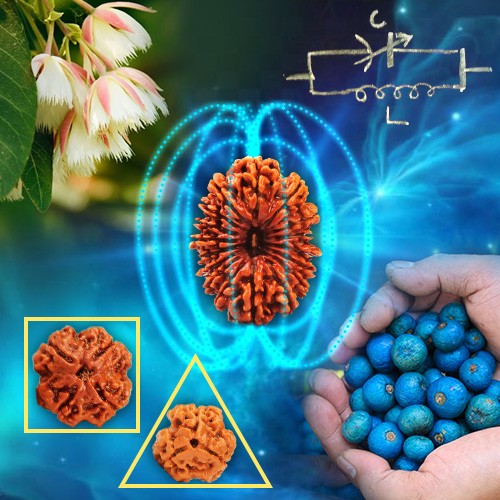
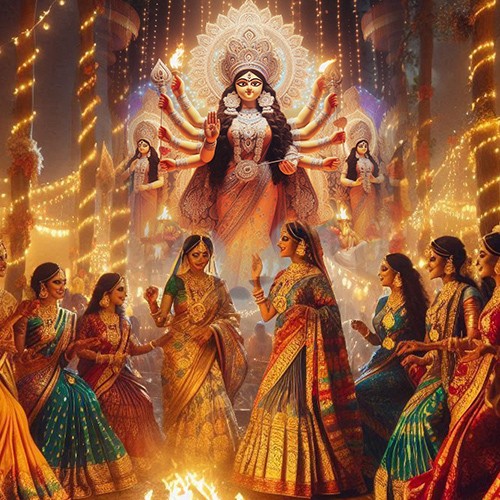


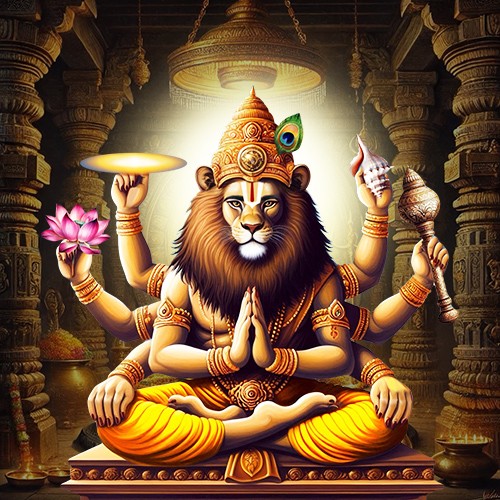

.jpg)
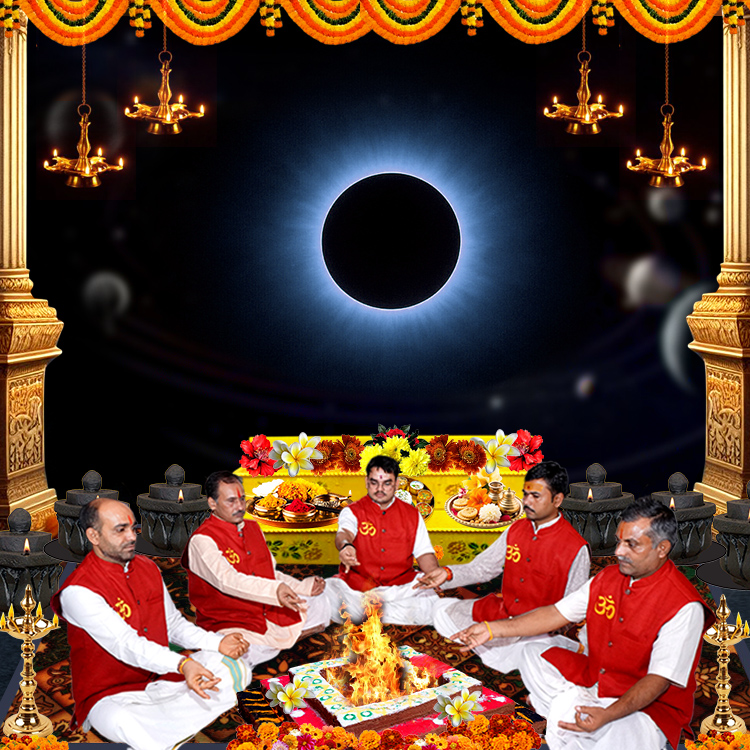
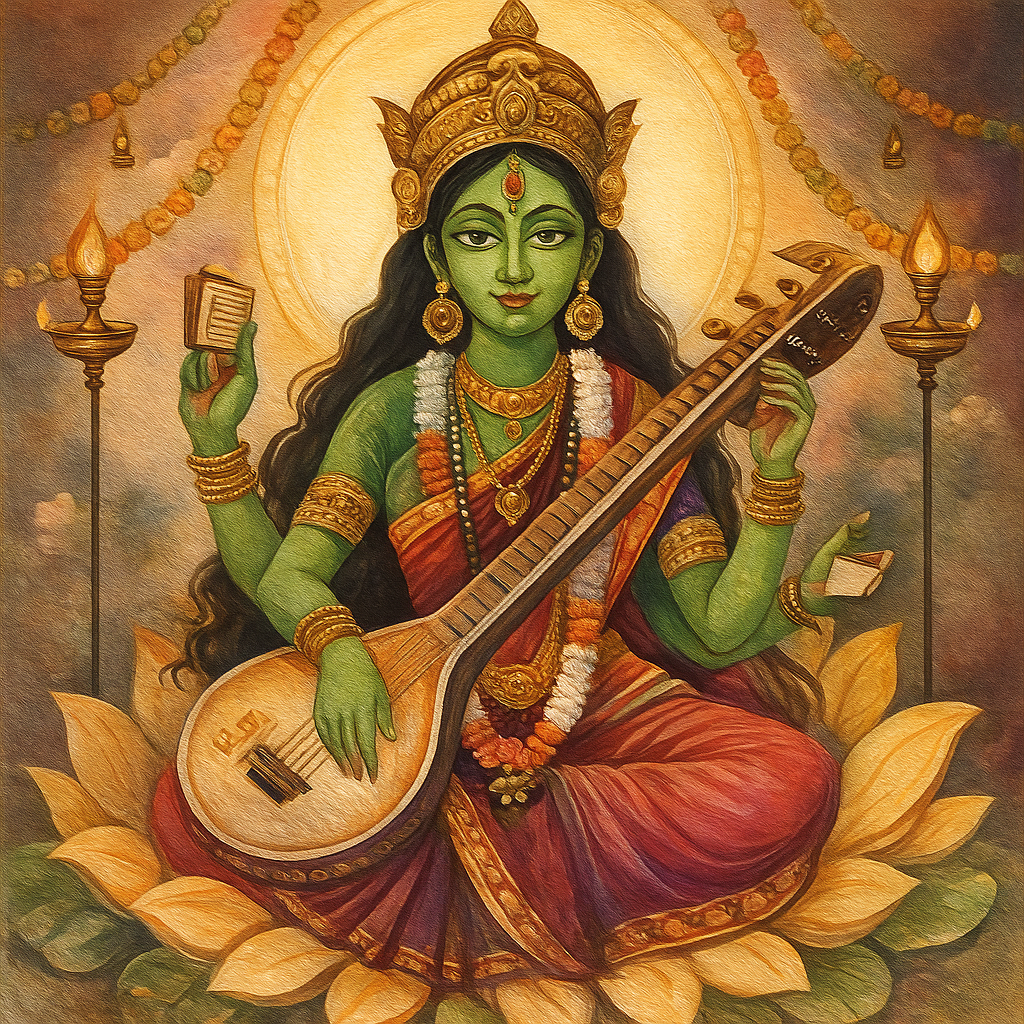
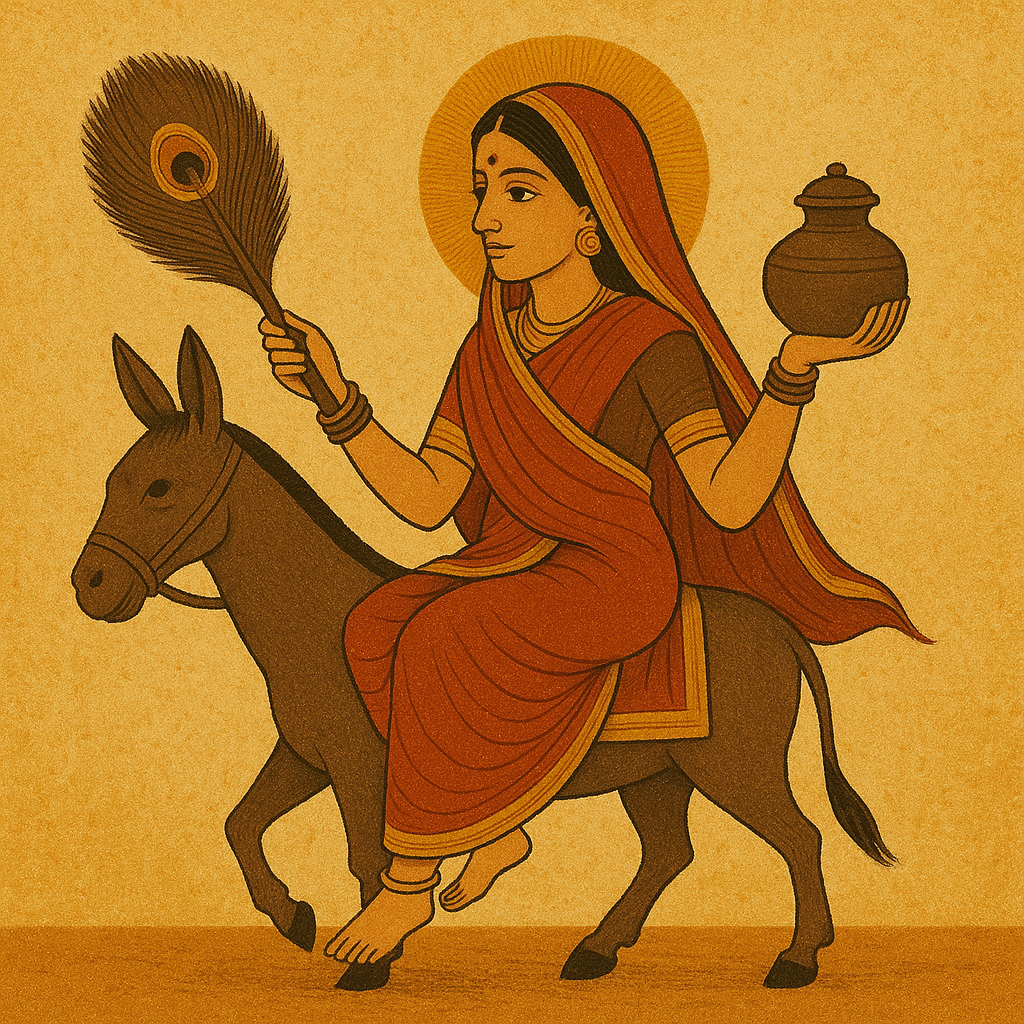
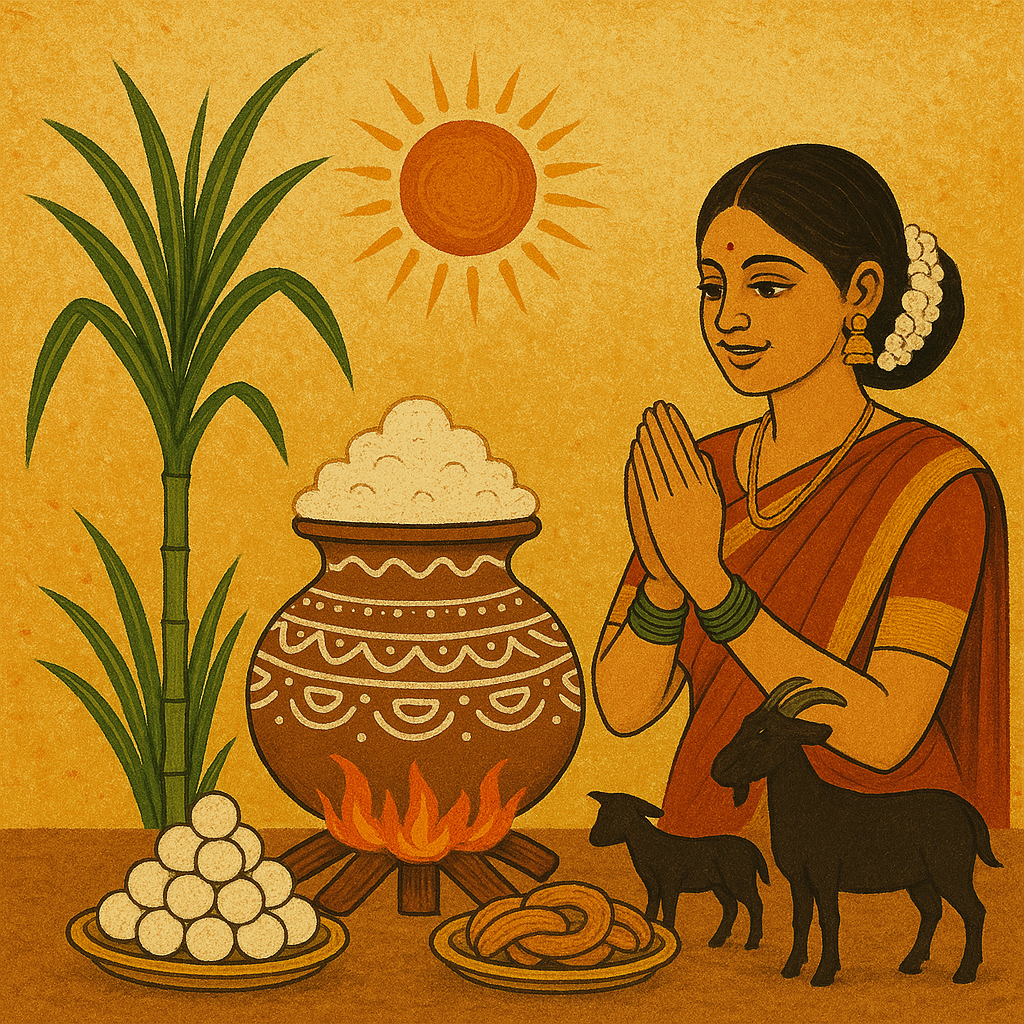
Barpananda Khundrakpam
|January 2, 2025
Sani Dasha Puja